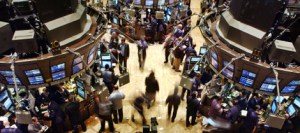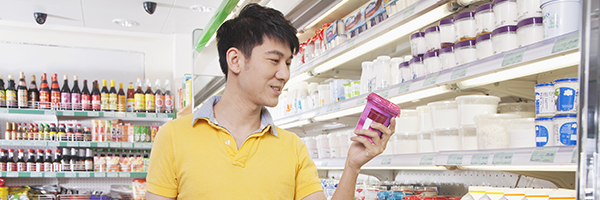 March 10, 2025
March 10, 2025
What You Need to Know Today:
Trump tells Fed that interest rates are too high
That was quicker than I expected. On Thursday President Donald Trump used a virtual address at the Davos World Economic Forum to pick a fight with he Federal Reserve and Fed chair Jerome Powell. I wasn’t expecting the President to go after the Fed until Wednesday, January 29–assuming, as now looks just about certain, that the Fed doesn’t cut interest rates at its meeting that day.

Today I made Copa my 5th pick in my Special Report “10 picks for a Yield Draught”
Today I added Copa Holdings (CPA), an airline stock paying 6.9% to my Special Report. Here’s what I wrote

Today I added my first picks for losers after Trump’s election victory
These picks for Trump election losers shouldn’t come as a surprise: The President-elect has made it clear that he hates wind power. Here’s what I wrote in my update to my Special Report: “11 Trump election winners and 5 Trump/Harris losers.”

Saturday Night Quarterback says, For the week ahead expect…
I expect more temporizing this week on when to sell a market that everyone agrees is too expensive. It’s especially worthwhile checking on potential tax loss sells as we come out of a great 2024 and head into a much less predictable 2025.

I just added this to my Special Report: “3 Strategies and 10 Picks for Juicy Returns in a Yield Drought”:Why the 3-month Treasury bill is a great investment now
Let’s start with the 4.54% yield. And then note that, if you hold a bill to maturity, it is essentially risk free. Compare that combination to gold which has a comparable degree of risk but pays a yield of 0%. Or to a 3-month CD where the average U.S. yield is 1.52% or to a 6-month CD where the average U.S. yield is 1.68%.

Higher mortgage rates for longer?
Three days after the U.S. election, Redfin, the technology-driven real estate brokerage that does business in 100 markets, raised its projection for the average mortgage rate in 2025 to 6.8%. That’s roughly where the current average 30-year fixed mortgage rate stands now. Other real estate analysts, including Moody Analytics and Capital Economics, expect rates near 7% next year. This is bad news for two reasons.

Special Report: 10 Penny Stock Home Runs Pick #5 VWDRY
My 10 Penny Stock Homeruns Pick #5: Vestas Wind Systems (VWDRY).
Technically, the Vestas Wind Systems ADR (VWDRY) isn’t a penny stock. By the strict definition, a penny stock sells for $5 or less and the Vestas ADR closed on $9.06 today, February 14. But I included Vestas in my previous penny stock list back on July 11, 2022, even though the stock closed at $7.80 that day. With the company reporting a return to profitability for 2023 in its fourth quarter earnings report released today, I think Vestas has (finally) turned the corner. And, frankly, I just don’t want drop it from this list just as things get good again for the company and its investors. (Vestas is a member of my Jubak’s Picks Portfolio. The position is up 65.6% since initiation on March 4, 2019.) Tomorrow, February 15, I’ll also add Vestas to my long-term 50 Stocks Portfolio.
Live Market Report (20 minute delay)

China slips back into deflation in October–not a good sign for the global economy
China slipped back into deflation in October, according to government data released over the weekend. China had shown a recovery from August deflation in September readings, but that recovery now looks temporary. As worrying as the deflation tag itself is the cause: week domestic demand.

Saturday Night Quarterback says, For the week ahead expect…
Maybe. Must maybe. All eyes will be on the Federal Reserve meeting on December 13.

U.S. economy added stronger than expected 199,000 jobs in November
The U.S. economy added 199,000 jobs in November, the Labor Department reported today, Friday, November 8. The unemployment rate dropped to 3.7% from 3.9% in October That surprised economists who had expected the unemployment rate to hold steady. The bond market reacted in the morning hours after the report was released at 8:30 a.m. New York time by selling Treasuries. The yield on the 10-year Treasury gained 8 basis points to 4.233% as of 10 a.m. in New York as bond prices fell. The yield on the two-year Treasury jumped 78 basis points to 4.669%.

Today’s inventory report points to expected slower GDP growth for the fourth quarter
Ever since reports showed the U.S. economy grew at a 5.2% annualized rate in the third quarter, economists have been telling investors to expect lower growth in the fourth quarter. Some of that higher growth in the third quarter, they argued, was pulled from the fourth quarter.
Today’s report from the Commerce Department showing a 0.4% drop in wholesale inventories in October supports the economists’ argument.

Initial claims, continuing claims for unemployment show a modestly slower jobs market
It’s probably not enough to push the Federal Reserve to cut rates on the schedule that Wall Street is hoping for –with the first cut in March 2024–but it does make a “no increase in interest rates” result from the December 13 Fed meeting even more likely.

Special Report: 10 Great Growth Stocks that Are Getting Greater–My first 8 picks
Here are the first 8 picks for my GREATER Growth Stocks Special Report. More on the way.

Moody’s cuts China bond rating on worries over debt load
Moody’s Investors Service cut its outlook for Chinese sovereign bonds to negative from stable today, December 5. The rating company kept tws long-term rating on China’s government bonds at A1. You don’t have to be a forensic accountant to see what worries Moody’s.

Jobs market continues to slow: I’m sure that makes the Fed happy, but how do “real” people feel?
In October job openings in the U.S. economy fell to the lowest level since early 2021. I’m sure that make the Federal Reserve happy ahead of its December 13 meeting on interest rates. The Fed has been looking for sign that the labor market is cooling off. And it’s getting plenty of them recently. (And will probably get more on Thursday and Friday when the government reports new claims for unemployment and the jobs situation for November.) The question, for those few of us who still see a recession in 2024 as a danger, is When is slower too slow? A slowing labor market means fewer gains to average weekly earnings. Which translates into either less consumer spending, or consumer spending fueled by more debt.

Some in the bond market are saying the bond rally has been too far, too fast
I’m hearing some chatter that says bond traders and analysts are stepping aside from the bond rally. Or are planning to do so. Their argument is that the move has been too far, too fast. Specifically, I’ve heard talk of selling if the yield on the 10-year Treasury hits 4.00%. On Friday, the yield was 4.20%. So I’d be watching to see if anything like a bond rally pause or reversal materializes during the days ahead of the Federal Reserve meeting on December 13

Saturday Night Quarterback says (on a Monday), For the week ahead expect…
I expect a nervous market this week as investors and traders look ahead to Thursday’s weekly report on initial claims for unemployment and Friday’s report on the jobs numbers for November.

Gold hits record high–Don’t chase gold; buy gold stocks
Gold (for February 2024 delivery) was trading at $2087 an ounce on New York Comex today, December 1. That easily beats the old record high of $2051.50 an ounce back in August 2020. The shiny metal is up 12% from $1830 an ounce in early October. The SPDR Gold Shares ETF (GLD), which holds gold, is up 2.53% in the last month as of November 30. History, and the price action on the Gold Shares ETF, tells us that at this point in a strong gold rally, it doesn’t pay to chase gold itself, but it does pay to buy shares of gold miners.

Powell tries to temper Wall Street belief in rapid interest rate cuts but no one is listening
It wasn’t the most forceful pushback it’s true, but the financial markets paid attention to Federal Reserve Chair Jerome Powell’s attempt to say interest rate cuts aren’t just around the corner for about two minutes. And then the rally based on a belief in 4 or 5 cuts in 2024, and as early as March (and certainly by May), was off and running again.

OPEC announces production cuts but oil traders don’t believe it
OPEC+ agreed to a surprise new oil supply cut of about 900,000 barrels a day at today’s meeting. But oil prices fell anyway. Turns out that nobody believes that the organization will deliver on its promises. Members including Russia, the United Arab Emirates, Kuwait and Iraq pledged the extra reductions after an online meeting, OPEC said. And Saudi Arabia promised to continue its unilateral 1 million barrel-a-day cut through the first quarter. But, critically, the cuts are voluntary.

Put a fork in it! Interest rates will definitely be on hold at December meeting, the market decides
The Dow Jones Industrial average soared 1.47% today–or 520 points–as the Federal Reserve’s favorite inflation measure showed that inflation continued to fall in October. The inflation news, the market decided, was exceedingly good news for the old economy stocks in the Dow 30. In contrast, the new economy stocks in the NASDAQ Composite fell 0.23% on the day.

So how low can lithium prices go? When do you buy battered lithium stocks?
At least the hand-over-fist selling of lithium stocks stopped for a day. Albemarle (ALB), the big and low-cost producer, did experience another 0.43% drop today, November 29. But that was still way better than the 6.3% plunge on Monday. And shares of Lithium Americas (LAC) and qm (SQM) managed gains of 1.38% and 0.98%, respectively. There’s no mystery to the drop. Lithium prices have continued to fall. As o Monday, Chinese prices for lithium carbonate have dropped 20% so far in November and 75% for 2023 to date.

GM pops on dividend hike and share repurchase–selling out of Jubak Picks portfolio
Shares of General Motors (GM) are up 11.39% today, November 29, on news that the company will boost its dividend by 33% (to 12 cents a share from 9 cents) and repurchase $10 billion of shares. I’m selling my position in the stock in my 12-18 month Jubak Picks Portfolio. That position is now down 10.03% since I added it to the portfolio on October 4, 2022. I don’t see anything in this report that changes the fundamentals of GM’s car business. Yes, the company demonstrates today with its biggest-ever buyback plan that its legacy gas-powered vehicle business throws off tremendous amounts of cash. Now. But the company has pulled back on many of the expensive investments that would have brought GM into the electric vehicle future.

China’s limits on graphite exports, a key ingredient in electric car batteries, go into effect this week
Meetings between presidents come and go, but China’s efforts to capture the high ground in technologies for the future economy–and to defend that ground once captured–just go on. On December 1 China will begin requiring export permits for some graphite products, another attempt to control critical mineral supply in response to challenges to its global manufacturing dominance. Beijing’s move to restrict graphite exports will have a disproportionate impact on foreign makers of electric vehicle battery components who have not yet shifted to using as much synthetic material as Chinese counterparts, industry insiders and experts told Reuters.

Economists project that the rate at which inflation is falling will slow–does the Fed care?
The pace of improvement in the U.S. inflation rate is set to slow in the coming year. According to the economists surveyed by Bloomberg in its latest monthly outing, the core personal consumption expenditures (PCE) price index-—-the Federal Reserve’s preferred measure of inflation–will still be running at a 2.5% pace at the end of 2024. That’s up slightly from the 2.4% prediction in last month’s Bloomberg poll. Importantly it’s still significantly higher than the Fed’s 2% target inflation rate.

This looks like some profit taking among tech stock winners
Hedge funds are unwinding some of their overweight positions in technology stocks after their concentration in the sector reached record levels, according to Goldman Sachs. Net selling in tech, media and telecom stocks last week was the most since July, Goldman Sachs wrote in a note today. Information Technology (XLK) and Communication Services (XLC) were the most net sold sectors, Goldman said. And, among subsectors, sales of software stocks, chips and chip equipment and interactive media and services “were by far the most net sold.” The outweighed buying in IT services and media.”

Oil falls again on doubts that OPEC will cut production
Oil declined for a third day with U.S.benchmark West Texas Intermediate falling another 0.73% to $74.99 a barrel. International benchmark Brent crude fell 0.65% to $80.06 a barrel. OPEC meets on November 30 and there’s good reason to doubt that the cartel will agree to cut production even in the face of falling oil prices.



